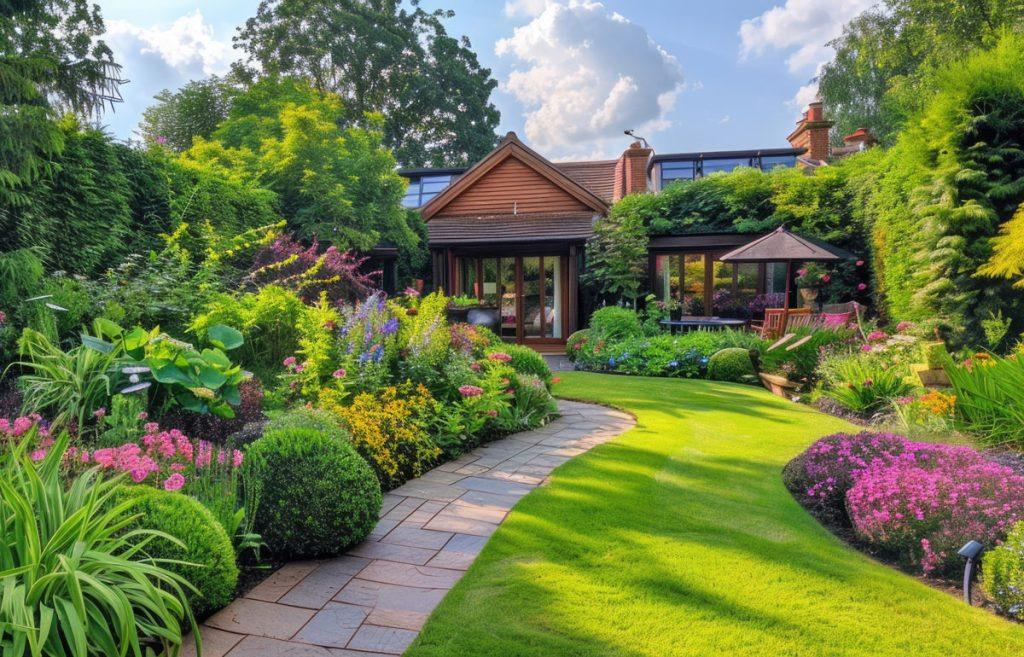Garden landscaping is both an art and a science, requiring a balance of creativity and practicality. While it’s exciting to transform an outdoor space into a personal paradise, there are common pitfalls that can turn a dream project into a nightmare. Understanding these mistakes and how to avoid them can save you time, money, and frustration, ensuring your garden thrives and brings joy for years to come. Here, we’ll explore the top mistakes to avoid in garden landscaping and provide tips on how to create a beautiful, sustainable garden.
1. Lack of Planning
The Mistake
One of the most significant errors in garden landscaping is diving in without a proper plan. Many homeowners start planting impulsively, leading to a disjointed and chaotic garden.
How to Avoid It
- Create a Detailed Plan: Before purchasing plants or materials, sketch out your garden design. Consider the layout, plant placement, pathways, and features like water fountains or seating areas.
- Set Goals: Determine the purpose of your garden. Is it for relaxation, entertaining, growing vegetables, or a combination?
- Consider Growth: Plan for the future growth of plants. Research how big each plant will get and ensure there’s enough space for them to mature.
2. Ignoring Soil Quality
The Mistake
Neglecting soil health is a common mistake that can impede plant growth. Poor soil conditions can lead to unhealthy plants and wasted efforts.
How to Avoid It
- Test Your Soil: Conduct a soil test to understand its pH and nutrient levels. This will guide you on what amendments are needed.
- Improve Soil Quality: Add organic matter like compost or manure to enrich the soil. This improves drainage, aeration, and nutrient content.
- Choose Plants Wisely: Select plants that are suitable for your soil type. Some plants thrive in sandy soil, while others prefer clay.
3. Overlooking Sunlight Requirements
The Mistake
Planting without considering the sunlight needs of each plant can result in stunted growth and poor health.
How to Avoid It
- Observe Your Garden: Spend time understanding how sunlight moves across your garden throughout the day.
- Group Plants by Sunlight Needs: Place sun-loving plants in areas that receive ample sunlight and shade-tolerant plants in less sunny spots.
4. Poor Water Management
The Mistake
Improper watering practices, either too much or too little, can harm your garden. Overwatering can lead to root rot, while underwatering can cause plants to wilt and die.
How to Avoid It
- Install an Irrigation System: Consider drip irrigation or soaker hoses to ensure consistent and efficient watering.
- Mulch: Apply mulch around plants to retain moisture and reduce the frequency of watering.
- Water Wisely: Water plants early in the morning or late in the evening to minimise evaporation.
5. Choosing the Wrong Plants
The Mistake
Selecting plants that are not suited to your climate or garden conditions can result in high maintenance and low success rates.
How to Avoid It
- Research Plants: Choose plants that are native to your region or well-suited to your local climate and soil conditions.
- Consider Maintenance: Be realistic about the level of care each plant requires. Opt for low-maintenance plants if you have limited time for garden upkeep.
6. Neglecting Seasonal Changes
The Mistake
Failing to plan for seasonal variations can leave your garden looking bare and unappealing during certain times of the year.
How to Avoid It
- Plan for Year-Round Interest: Include a mix of plants that bloom in different seasons. Incorporate evergreens, perennials, and seasonal flowers.
- Consider Winter: Think about how your garden will look in winter. Include structures like trees, shrubs, and hardscape elements that provide visual interest year-round.
7. Inadequate Spacing
The Mistake
Planting too closely together can lead to overcrowding, which stifles growth and increases competition for resources.
How to Avoid It
- Follow Planting Guidelines: Pay attention to the recommended spacing for each plant. Allow enough room for plants to grow to their full size.
- Thinning: Be prepared to thin out plants if they become too crowded to ensure they have enough space to thrive.
8. Neglecting Hardscape Elements
The Mistake
Overemphasising plants and neglecting hardscape elements like pathways, seating areas, and structures can lead to an impractical and less enjoyable garden.
How to Avoid It
- Incorporate Hardscaping: Plan for pathways, patios, and other hardscape features that provide structure and functionality.
- Balance Softscape and Hardscape: Strive for a balance between plants and hardscape elements to create a cohesive and usable garden space.
9. Forgetting About Maintenance
The Mistake
Underestimating the maintenance required to keep your garden looking its best can lead to neglect and deterioration.
How to Avoid It
- Choose Low-Maintenance Plants: Select plants that require minimal care if you have a busy lifestyle.
- Regular Upkeep: Dedicate time each week for garden maintenance tasks like weeding, pruning, and watering.
- Professional Help: Consider hiring professional garden maintenance services if you’re unable to keep up with the work yourself.
10. Ignoring Wildlife
The Mistake
A garden that doesn’t support local wildlife can miss out on the benefits that birds, bees, and other creatures bring to the ecosystem.
How to Avoid It
- Plant Native Species: Native plants are more likely to attract and support local wildlife.
- Provide Habitats: Incorporate elements like birdhouses, bee hotels, and water features to encourage wildlife.
- Avoid Pesticides: Minimise the use of chemicals that can harm beneficial insects and other wildlife.
Conclusion
Creating a stunning garden landscape requires careful planning, thoughtful plant selection, and ongoing maintenance. By avoiding these common mistakes, you can design a garden that is not only beautiful but also sustainable and enjoyable. Remember, a successful garden doesn’t happen overnight. It evolves over time with attention, care, and a willingness to learn from both successes and setbacks. Happy gardening!




